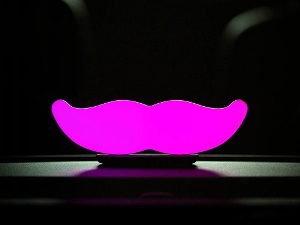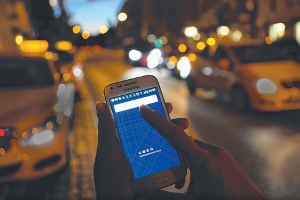As innovation has made it possible for my generation to satisfy needs at an increasingly rapid pace, we’ve adapted accordingly. Millennials expect the same efficiency that we see in services like Amazon Prime and Spotify to be reflected in our transportation options as well, which is perhaps why many of us have readily embraced the seamless, on-demand mobility provided by ridesharing apps.
Last week, I discussed how shifting mass transit preferences impact the way in which cities allocate their transportation dollars. Similarly, as transportation becomes ever more service- rather than product-oriented, and ridesharing services approach new regions, apps like Uber and Lyft will maintain an increasingly formidable influence on our society’s mobility.
Irresistible Innovation

On-demand mobility conforms to the flexibility and spontaneity of our own schedules. It’s a social experience that we can share with friends, yet personalized to the extent that we can play our Spotify playlists, specify the quality and size of car that arrives for us, and rate our experience afterward. Ridesharing also allows us to abandon those awkward post-taxi moments comprised of pooling together cash and determining a tip. Most notably, Uber and Lyft allow us to split the fare equally between users, rather than hunting down our friends for money later.
In every way, rideshare appeals to the sort of innovative adaptability that my generation champions.
Beyond the Obvious
It seems easy to attribute the growing popularity of app-based mobility simply to the rising preferences of the millennial generation listed above. But in reality, ridesharing services do more than entertain my generation’s tech-centric, “sharing economy” transportation dreams. Uber and Lyft provide every person willing to download the app (not just millennials) with a creative and flexible way to problem-solve in their own respective situations.
More Than Getting from Point A to Point B
While I certainly use Uber (my ridesharing app of choice) as a travel solution, I’ve also been known to use it as a unique problem-solving tool for many of life’s little challenges. For example, my roommate and I frequently called an UberXL from the grocery store in order to dodge lugging our groceries a mile back to our apartment in the D.C. heat. I’ve been known to use ridesharing for desperate fast-food drive-through excursions, and admittedly as a ride home upon giving up on exercise halfway through a jog.
In short, each individual transit need is unique, and services like Lyft and Uber present an adaptable solution to every unusual demand.
Ridesharing but Not

Of course, this is an outstanding circumstance. Yet the principle that ridesharing offers a solution to individuals who lack the luxury of being able to pool transportation resources with others stands true. Ridesharing is great with friends, but even more indispensable when travelling alone.
A Groundbreaking Resource for Women
For women, Uber provides an unparalleled resource in terms of personal safety. As a woman, having access to Uber and Lyft gives me the comfort of knowing that if, at any point, I want to leave a situation alone, I have the ability to do so safely.
Even over the last few years, I’ve observed the immeasurable impact that ridesharing has had on female mobility. Before Uber and Lyft, women seeking to leave a situation on their own and without a personal vehicle had a very limited range of undesirable options: essentially taxi, mass transit, or walking. Nothing says ‘I’m alone and vulnerable’ quite like hailing a cab alone on a dark street at night, let alone walking, for that matter. Though mass transit could be a viable option, at the very least it involves a walk there and home, and it may not even be running at night.
Ridesharing offers an alternative option to women seeking to travel alone, enabling them to leave their present situation and walk straight into a waiting vehicle. Knowing that we have access to reliable transportation from any situation or location, simply by using an app, has revolutionized the manner in which my friends and I travel. Ultimately, ridesharing services allow women an unparalleled degree of freedom and safety in individual transit.
In short, though ridesharing resonates with my generation because it synthesizes many of our values into one very efficient program, ridesharing gives people of all ages a whole new set of tools with which to problem-solve. As mobility trends continue to shift, municipalities should consider embracing ridesharing programs and their community impact, not only because reliable transportation stimulates local economies, but because programs like Uber and Lyft grant society an incomparable freedom of movement and the ability to re-invent the way we get from place to place.